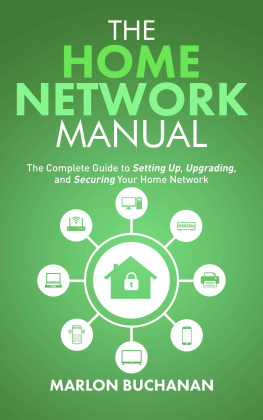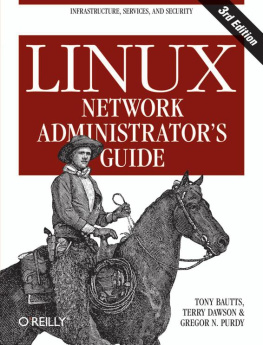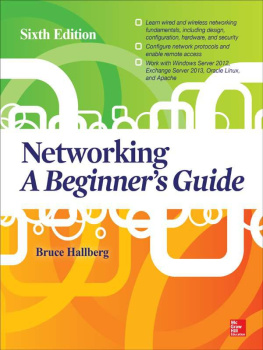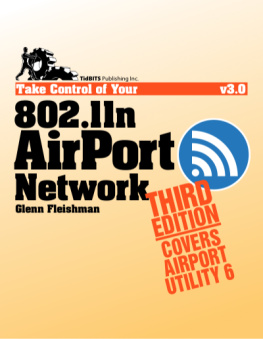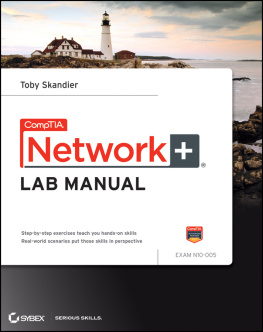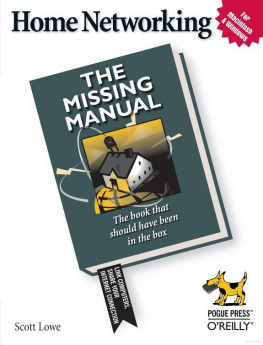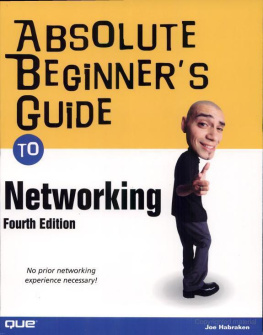A book like this is always a collaboration, even if only one author's name is on the cover. The book in your hands is a huge improvement over the original manuscript, thanks to the efforts of editors Tyler Ortman and Kathleen Mish and copyeditors Eric Newman and LeeAnn Pickrell. Technical editor Michael Kershaw protected me from embarrassing technical errors. And compositor Riley Hoffman made this the attractive book you hold in your hands. Thanks to all of you. Of course, any surviving errors or unclear descriptions are my own responsibility.
Thanks also to Jim Cavin for allowing me to connect his MacBook to my network and Tommy Tse for his assistance in obtaining evaluation software from Microsoft.
And thanks as usual to my agent, Carole McClendon, who started the wheels turning on this project.
INTRODUCTION
This book is for people who never expected to build or run a computer network. You were happily using a computer, sending and receiving email, writing reports, and maybe downloading music through the Internet when one day you looked around to discover that one computer had somehow multipliednow you have two, or three, or more computers. Maybe each of your children needs his or her own computer to do homework or all of your employees have computers on their desks. Or maybe you brought a portable laptop computer home from work and you want to use it along with the family's desktop machine.
Whatever the reason, you now have several computers, and you need a way to connect all of them to the Internet at the same time and to share files, printers, and other resources among them. You need a network.
A network? Yikes! Isn't a network some kind of invisible monster that requires expensive equipment and people to keep it running who speak a mysterious language and go off to seminars with titles like "The Power of Virtualization" or "Removing Internet Anonymity Barriers with IP Intelligence"?
Not necessarily. Networks are not just for geeks any more. Today's small networks are relatively easy to install, and you don't need an advanced course in computer technology to operate them. Even the smallest of small businesses will probably benefit from having a network. And home networks are becoming common household utilities, just like water, electricity, and cable TV. Like those other utilities, you don't need a technical background to use a network. This book will tell you what you need to know to build and use a small, simple network in your home or business without becoming mired in obscure technical details.
We thought about calling this book Networks for Nitwits , but that's not quite what the book is aboutyou're not a nitwit; you're an intelligent computer user who has been dragged into the world of networks. I suggested The Bridges and Routers of Madison County , but that would be an entirely different book: the bittersweet tale of an Iowa housewife who finds romance with an itinerant network installer. Somebody should probably write that book, but this isn't it.
This is a guide to navigating the jungle of servers, routers, modems, and Ethernet cables and to getting the most out of your small network. I'll explain how networks operate (without getting into too much tedious technical detail), describe each part of a network, and tell you how to use the network with computers running Windows XP and Vista, Macintosh OS X, and several versions of Linux and Unix. I'll also tell you about some other ways you can use your network, including automating household appliances and distributing digital audio and video to computers, home entertainment systems, and "Internet radios" throughout your house.
The ideal network is the one that youand the other people using your networknever have to think about. You would plug a cable from each computer into an outlet, and every other computer on the network would immediately recognize it. And the network would simply be there, ready to use. Or it would be completely invisible, like the wires that provide electricity to the lamp next to the chair where you're reading this. If you think about it, you don't really want a network; you want to see and hear files and other resources that are located beyond your own computer. A network is the means to that end.
As I wrote this book, I kept several goals in mind: First, I wanted to provide enough information that readers with some basic computer knowledge and skills could understand how networks work and how to plan and install their own small network; second, I wanted readers to think about additional uses for their networks; and third, I wanted to offer advice and tools for fixing a network that isn't working correctly. If I have succeeded, your network will be up and running shortly after you follow the book's instructions and recommendations.
Network Know-How begins with a general overview of networks and the things you can do with them. In later chapters, you will learn how networks handle digital data, how different kinds of networks move that data from one place to another, and how the equipment at the core of most networkshubs, routers, modems, and other devicesworks. Next, I'll introduce the important concepts of clients and servers and tell you how to design and install simple wired and wireless networks, how to connect the local network to the Internet, how to build security into your network, and how to use your network for music and video along with computer data. And finally, the last chapter of the book offers advice about troubleshooting and describes some useful tools that might make life a bit easier when it becomes necessary to find and fix a problem.
When you have a network in your home or small business, all the computers connected to the network will become more flexible and more useful. Your new network will change the way you use your computer; within a few weeks or less, you will definitely wonder how you got along without it. When you and the other people connected to your network find yourself using it without thinking about "the network," you and I will both have met our objectives.
Chapter 1. HOW A NETWORK WILL IMPROVE YOUR LIFE


